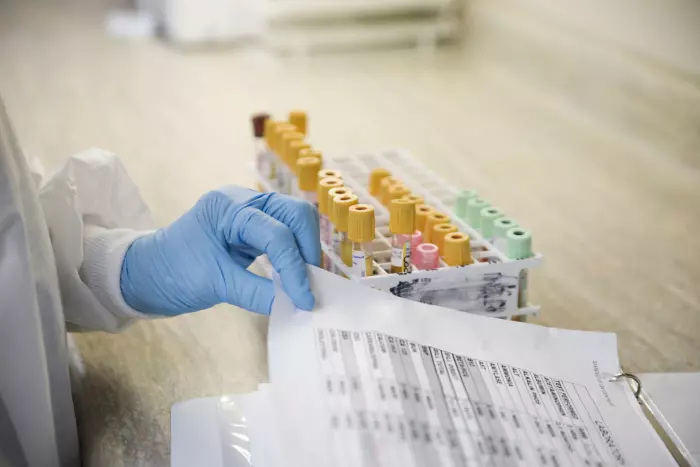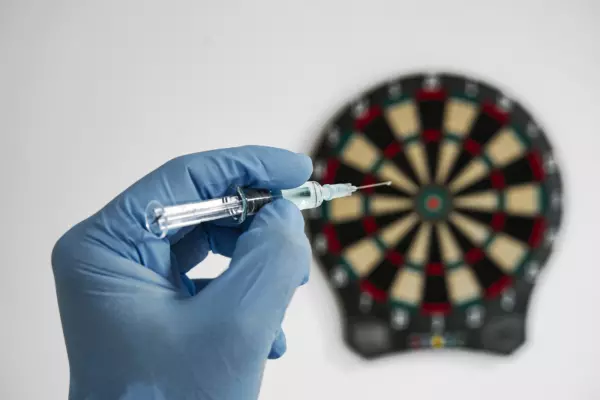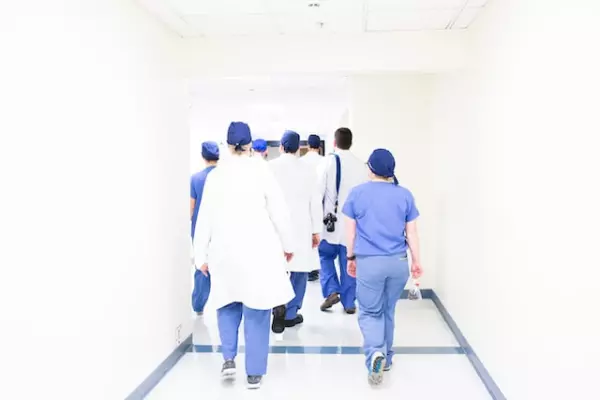The future of New Zealand’s hospital laboratories is at a critical stage.
This is the result of extensive privatisation of the facilities since the mid-2000s, for which both Labour and National governments share responsibility.
But now there is a chance for new health minister Dr Ayesha Verrall to make a difference for the better.
She can instruct Te Whatu Ora – Health NZ to end existing privatisation arrangements on their contract expiry date and move to an integrated hospital-run laboratory system reinforced by workforce and plant investment.
Medical laboratories
The central role of medical laboratories to health systems is not fully understood.
I recall a former head pathologist in Christchurch having a standard message as part of his emails saying that laboratories affect 70% of clinical decision-making. For cancer treatment, it's 100%.
So, what is pathology?
It's a branch of medicine involving the study and diagnosis of diseases through examining surgically removed organs, tissues (biopsy samples), bodily fluids (including blood, urine and faeces) and in some cases the whole body (autopsy).
There are five sub-branches of pathology:
- Forensics – autopsies and legal pathology tests.
- Anatomic pathology – tissues, organs and tumors.
- Cytopathology – cellular changes and everything related to cells.
- Clinical pathology – blood, urine and tissue homogenates or extracts.
- Molecular pathology – DNA and RNA, genes, and genetics.
However, laboratories are much more than pathologists. Also critical to their role are well-qualified medical laboratory scientists and technicians.
Working alongside this multidisciplinary skilled workforce are other medical doctors specialised in disciplines such as haematology, immunology and infectious diseases.
The lab challenge facing DHBs
In general terms, there are two types of laboratory testing – community and hospital.
Community labs are for general practitioner referrals to privately-owned laboratories. The hospital facilities are for medical specialist referrals within public hospitals (mainly surgeons and physicians, along with other medical specialists).
Some more complex community cases are also referred on to a hospital laboratory.
This was the case in 1993, when the National government sought to run the health system and public hospitals as a competitive business market.
During those seven years, three hospital laboratories were privatised (North Shore, Taranaki and Palmerston North). But their new district health boards were dissatisfied with the services in North Shore and Taranaki, so these two labs were later returned to public management.
But ironically, it was after this market experiment was abandoned that the privatising of hospital laboratories started to speed up.
In 2001, the newly formed DHBs found themselves confronted with a new predicament because they became responsible for both community and hospital healthcare for their populations defined by geography.
Funding for hospital services including laboratory testing was fixed, but for community testing it was demand-driven. That meant that DHBs had to fund something which they couldn't control unless they took further action – specifically, to capitate funding, which they did in the mid-2000s. Capitation payments are based on the numbers of patients enrolled with individual general practices.
Some DHBs were attracted to a single laboratory for both community and hospital testing. There was a logic behind this. There was spare capacity in hospital laboratory equipment to do some, or perhaps all, community testing. Then, unlike today, the health system was not ravaged by severe workforce shortages.
Compounding the situation was the fact that although overall health spending increased in relative terms for much of the 2000s, this was mainly for primary care and major capital works in hospitals.
For hospital operating expenses, such as laboratories, this was not the case.
This made the funding of community testing difficult for DHBs. Private laboratories were encouraging GPs to do more tests because the labs were paid on a fee-per-test basis.
Privatisation floodgate
Privatisation started in earnest when Labour’s Pete Hodgson was minister of health. Working together, the Otago and Southland DHBs decided to put their hospital and community laboratory testing out to tender. The hospital laboratory became a bidder, competing against the privately-owned Southern Community Labs (SCL).
After a murky process, the board supported the SCL bid, which Hodgson then approved.
Hodgson’s approval of privatisation opened the floodgates.
More DHBs followed suit and private companies succeeded, largely because they could afford to bid as a commercial loss leader but then focus on maximising profits once they were in control of the hospital laboratory.
In Hodgson’s two years as health minister (2005-07), there was more privatisation than during the preceding nine years of the pro-market National government.
In contrast, during the six years Tony Ryall was National's health minister (2008-14), there were no further hospital laboratory privatisations.
Relative underfunding of public hospitals for much of the 2010s increased the pressure on DHBs. This pressure was a key factor in the decision to privatise hospital laboratories at the Capital & Coast and Hutt Valley DHBs under Jonathan Coleman as health minister.
By June 30, 2022, the last day before their abolition, 11 of the 20 DHBs had their hospital laboratories privatised.
The largest of these were Capital & Coast and Southern (which was made up of the merged Otago and Southland boards). The remaining nine under public control included a greater proportion of larger DHBs such as Auckland, Waitematā, Counties Manukau, Waikato and Canterbury.
Hospital laboratories are not all the same.
Several, including those privatised, refer very complex testing to what are called ‘tertiary laboratories’ (low-volume, high-complexity testing).
Of the five tertiary laboratories, two are privately run – Wellington and Dunedin. The other three (Auckland, Waikato and Canterbury) are publicly run.
It's not just the growth of privatisation that has been a feature of hospital laboratories since the mid-2000s.
When Hodgson approved the first major privatisation, the biggest private laboratory company in NZ was the Australian-owned Sonic.
There were also a number of smaller, locally-owned companies. The biggest two were SCL, based in Dunedin, and Pathlab, based in Waikato.
Sonic’s penetration was largely because it provided community testing in metropolitan Auckland (Diagnostic Medlab).
Among other things, the floodgate allowed Sonic’s Australian rival, Healthscope, to enter the market.
The Healthscope factor
Healthscope, under the Asia Pacific Healthcare Group (APHG) brand, was able to take community testing away from Sonic in Auckland, take over the SCL laboratories and then privately operate hospital and community testing in the lower North Island DHBs.
In 2020, it was sold to the NZ Super Fund and Ontario Teachers’ Pension Plan Board, which each took a 50% stake.
Now, 56% of hospital laboratories in NZ are publicly operated and 44% privately run. Of these privatised hospital laboratories, half are operated by APHG.
APHG operates its laboratories mainly under the SCL and Labtests brands.
Of the rest of the private providers, the locally owned Waikato-based Pathlab has 16% of the national hospital market, while Sonic, largely unchanged for over a decade, has 6% (Gisborne, Whanganui and Palmerston North).
Community testing has historically been privately-owned by locally-operated business interests but today is dominated by one large commercial entity, which has resulted in a monopoly of community laboratory testing.
Fragmenting of a key tool
The result of private companies operating public hospital laboratories has been to fragment a critical diagnostic service.
However, to function effectively, these laboratories need to be integrated both within the hospital they serve and nationally.
Where there has been privatisation, there's a conflict of accountability and many service decisions are based on purely financial decisions, rather than patient needs and availability.
Private operators are driven by the need to make a profit and to maximise the size of their profit by eliminating competition and keeping staffing levels ‘lean and mean’.
This is to ensure investors don’t look for a better rate of return elsewhere.
On the other hand, public hospitals are dependent on laboratory testing, but making a profit is not their driver.
Instead, within financial constraints, they are accountable to the patients who need planned, acute and emergency treatment – and there's no tap to turn off demand.
Private operators are incentivised to work according to what the contract demands. But the hospitals that depend on them are not. They work according to patient demand and needs.
What's more, contracts do not keep up with the ongoing dynamic of changes in hospital healthcare delivery.
This was the experience of privatising radiology in Taranaki in the late 1990s.
Over the years, it couldn't adapt to ongoing innovative quality improvement developments in patient care within the hospital.
Increasingly, the privatised laboratory became unfit for purpose. Consequently, radiology was brought back under public management.
In the middle of this unsettling environment, pathologists, scientists and technicians are caught between their private employer and their professional responsibility to test referrals from surgeons, physicians and other medical specialists.
They don’t deserve to be put in this position.
There is no incentive for private operators to invest in their staff, update equipment, offer career progression or invest in the education and recruitment of the future workforce.
We can learn from the privatisation in the former Otago and Southland DHBs that opened the floodgates.
Southland’s hospital laboratory has been run down to the point that it is now little more than a collection centre with no onsite pathologist support.
This increasing monopoly in hospital laboratories leaves the labs and the hospitals that depend on them vulnerable.
All it takes is a change in profit priorities elsewhere for a crisis to be created.
Moving forward
Health NZ is now reviewing the state of lab testing.
There are some suggestions that useful work is being done in this space, but that remains to be seen. The role of Ayesha Verrall will be critical.
The first step is for Te Whatu Ora to decide that hospital laboratories should be publicly rather than privately run. This would create a fit-for-purpose integrated laboratory system within each hospital, between hospital laboratories (particularly non-tertiary and tertiary), and nationally.
One immediate benefit would be the setting up of a strong foundation for investment in both the lab workforce and equipment that will give the stability and direction that is so desperately needed.
This will mean advising the private operators of hospital laboratories that Te Whatu Ora will be exiting their contracts at their next expiry date.
This move will run into strong opposition, perhaps even legal threats, from the vested interests of these operators, so a strong preparedness to stare this pressure down will be needed.
Single laboratories combining both community and laboratory testing have considerable potential.
The equipment used in hospital labs can largely also be used for community testing, too.
However, it depends on equipment being maintained and updated, with research and innovation at front and centre.
It depends even more on hospital laboratories having the right workforce capacity and capabilities – the right number of pathologists, scientists and technicians, haematologists and infectious disease specialists.
Single laboratories should be in any strategic laboratory plan. But, for a single laboratory to come to fruition, it will need the foundation of integrated public hospital laboratories coupled with strong national coordination and leadership.
Fixing the fiasco
In my more than 30 years of representing salaried medical specialists, I came to appreciate their many positive characteristics. One of these characteristics is presence of mind.
Dr Verrall has experience as an infectious diseases specialist and the intellect to understand the importance of an integrated public laboratory service.
She also has the presence of mind to act on it.
The health minister only has a limited time to make a difference to the health system, given the current state it is now in through no fault of its own.
Fixing the laboratory fiasco by reversing the privatisation floodgate is one way she can make a real and immediate difference.
Any future restructure of the pathology sector needs to use the strong professional body, union and sector expert leadership that has been clearly visible over the past few difficult years.
This is where the minister will find strong allies.














